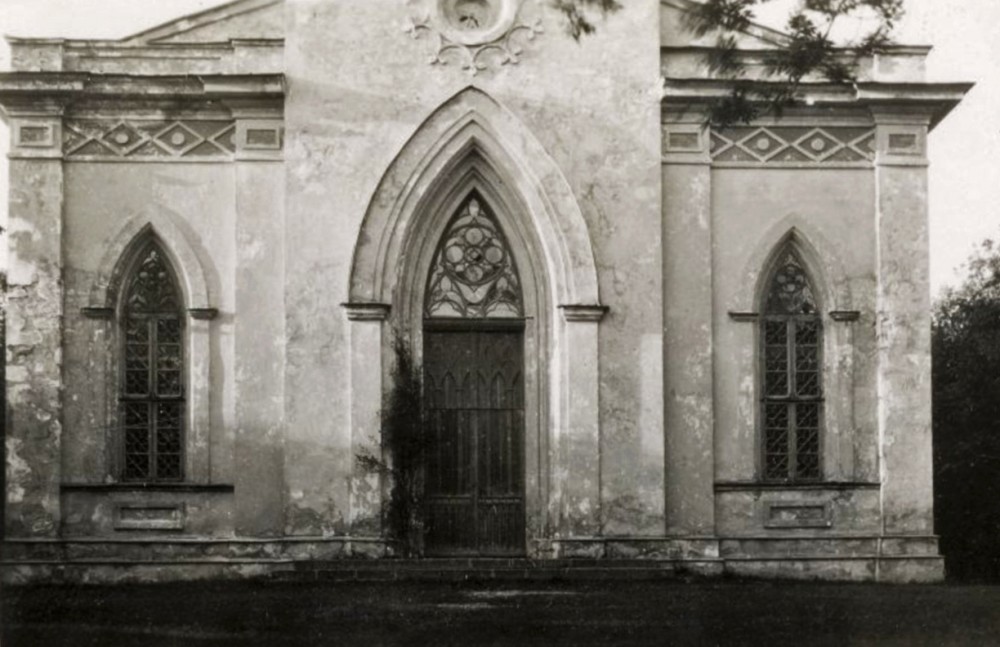The first church in Vecpiebalga was built in 1345, the second from 1839 to 1945, under the guidance of Marcis Sarums. Vecpiebalga Lutheran Church was ruined in the autumn of 1944, during the Second World War. The church was restored in 1997 according to the design of the architect Ausma Skujina. The altar is decorated with an altarpiece Christ Walking in the Land of Piebalga by Julijs Jegers.
The new church was confirmed on July 22, 1845. The church building project has not survived, but it is one of the first neo-Gothic buildings in Latvia. We only known that pastor Schilling had brought the design from Tartu, and the project was possibly created by architect Georg Friedrich Geist (1782-1846), whose design of St. Mary’s Church in Tartu (1836) was similar to Vecpiebalga Church in terms of architectural solutions. The construction work was supervised by Brandt and Keze, in final stage Marcis Sarums also participated in the construction project. In 1895, developer Jānis Brauns renovates the church. The church bell’s altitude is 260 m.
With Latvia’s independence, the congregation is also renewed. On October 26, 1997, archbishop Janis Vanags consecrated the renewed Vecpiebalga Church. Owing to the members of the congregation, historical altarpieces are salvaged. The church is restored according to architect Ausma Skujina’s design. Only two of the three stages of church’s restoration have been done because the church tower has not been built. In 2007, on the 10-year restoration anniversary service, a new organ, built in England in 1928, was consecrated.
The church, opened in 1845, was blown up in 1944. Restored in old walls without the bell - tower. Above the altar J. Jegers’ painting “My peace I give you”. The organ was built in 1928 in England.
Opening hours 8AM - 8 PM (during summer).
vecpiebalga.lv
The first church in Vecpiebalga was built in 1345, and the next one was built between 1839 and 1845 by the Livonian builder Mārcis Sārums. The church was destroyed in 1944 and restored between 1995 and 1997 (architect Ausma Skumiņa). The altar painting is titled “Christ Walking in the Land of Piebalga.” Outside the church is a rock to commemorate those who suffered from political repressions in Latvia.
www.celotajs.lv





